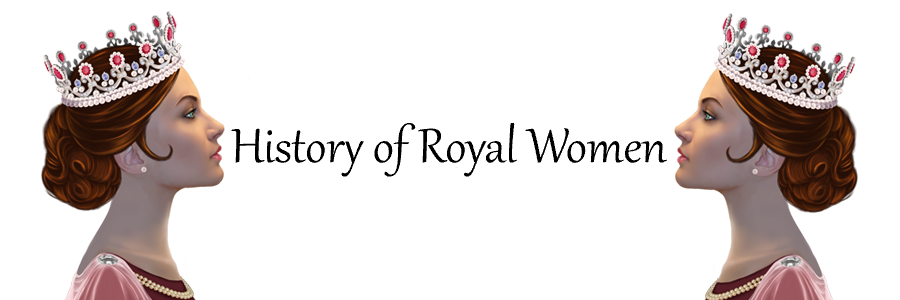
Princess Nobuko of Japan was born on 7 August 1891 as the daughter of Emperor Meiji of Japan and his fifth imperial concubine, Sono Sachiko. She was her father’s twelfth child and eighth daughter and her mother’s fifth child and fourth daughter. Her father’s official spouse was Empress Shōken.
Nobuko’s mother, Sono Sachiko, was the daughter of Count Sono Motosachi and although she bore the Emperor eight children, only four daughters would survive to adulthood: Masako, Fusako, Nobuko and Toshiko. Children born to concubines were treated as legitimate and could if they were male, succeed to the throne. All children born to concubines were considered children of the Empress, and their biological mother would have very little part in raising them. Sono Sachiko was hidden from public view.
At the time of Nobuko’s birth, just three of the Emperor’s many children were alive, many having died in infancy. Besides Nobuko, the other three children were Crown Prince Yoshihito and Nobuko’s full sisters, Masako and Fusako.
Empress Shōken acted as her foster mother and reportedly greeted her and her sisters only after removing her floor cushion from beneath her as a gesture of humility. The princesses would protest this, but the Empress replied, “I cannot. I came from a subject family [shinka], but Your Highnesses are His Majesty’s children by birth.” The princesses reportedly treated their birth mother as a servant and addressed her in yobisute (the calling of a person by their name without an honorific suffix).1
The Princesses were not close to their father. One of them said, “Believe it or not, I met my father on the eve of my wedding for the first time in my life. He didn’t even recognise me. He asked me who I was and where I was from!”2
On 6 May 1909, Nobuko married Prince Yasuhiko Asaka, who came from a collateral branch of the Imperial Family. Shortly before their wedding, Nobuko’s father granted him the title of Asaka and the authorisation to begin a new branch of the family. After the wedding, she was known as Princess Asaka. They went on to have two sons and two daughters together: Princess Kikuko (born 1911), Prince Takahiko (born 1912), Prince Tadahito (born 1914) and Princess Kiyoko (born 1919).
Her husband was a graduate of the Army War College and between 1922 and 1924, he studied in France. While there, he was in a car accident alongside his sister-in-law Fusako and her husband Prince Naruhisa Kitashirakawa. They had gone for a drive and Prince Naruhisa Kitashirakawa insisted on driving himself, so his French chauffeur was seated in the front passenger seat. Prince Yasuhiko was in the seat with his sister-in-law and her lady-in-waiting, Elizabeth Sauvy. They were going at quite a high speed, which Prince Naruhisa Kitashirakawa pointed out. He swerved to pass another car but crashed head-on into a sycamore. The car flipped, killing both the French chauffeur and Prince Naruhisa Kitashirakawa instantly. Prince Yasuhiko, Princess Fusako and Elizabeth suffered broken bones and other wounds but survived. Princess Nobuko sailed to France to take care of her sister and husband. They would remain in France for over a year.3

On the way back to Japan, Nobuko and her husband visited the United States. In November 1925, they arrived in New York, where they joined a dinner by the Japan Society. The New York Times reported, “Both the Prince and Princess admitted a love of Western dancing, and it was learned that in midocean the Prince had asked by radio that dancing be included at the Japan Society dinner last night.”4 They also went sightseeing and the New York Times reported Nobuko’s desire for oysters and “real American food.” They also attended a performance of Fedora at the Metropolitan Opera House.5 After New York, they travelled to Washington, where her husband wanted to lay a wreath at George Washington’s tomb.6 They visited several other cities before leaving for Japan at the end of November.
During their time in Europe and the United States, Nobuko and her husband fell in love with the Art Deco movement. After their return to Japan, they began planning a new mansion in the Art Deco style in Tokyo. This mansion is currently the Tokyo Metropolitan Teien Art Museum. It was completed in May 1933, but Nobuko did not enjoy it for very long.
Princess Nobuko died on 3 November 1933 from kidney disease. She was still only 42 years old.
Her husband later became known for his role in the Nanjing Massacre. Following the Second World War, he and their children were stripped of their titles and demoted to commoner status.
- Above the Clouds: Status Culture of the Modern Japanese Nobility by Sugiyama Takie Lebra p.226
- The Yamato Dynasty by Sterling Seagrave p.71
- The Yamato Dynasty by Sterling Seagrave p.114
- The New York Times
- The New York Times
- The New York Times

Be the first to comment